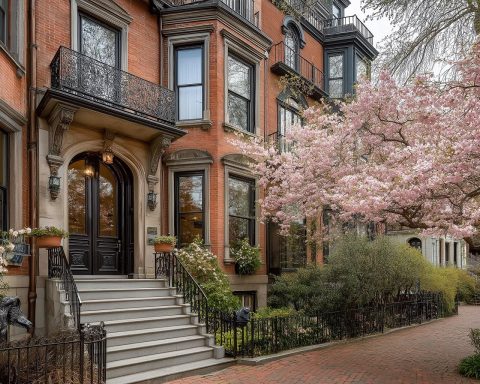Overview of Current Market Conditions (2025)
Palm Beach County’s real estate market in 2025 remains robust but has cooled from the frenzied pace of the early 2020s. Residential prices are still rising moderately, while inventory levels have improved from record lows, shifting the market toward a more balanced state rocket.com rocket.com. Commercial real estate is experiencing mixed conditions: office and industrial sectors are buoyed by business growth and low vacancies, whereas retail has seen a slight uptick in vacancy as it adjusts post-pandemic globest.com bdb.org. Overall, strong population and job growth, coupled with high demand from relocations, continue to underpin the market’s strength in 2025.
Residential Real Estate Trends in 2025
Home Prices, Sales and Inventory
The median home sale price in Palm Beach County is around $530,000 as of May 2025, reflecting a year-over-year increase of roughly 3–4% redfin.com rocket.com. This growth is more modest than the double-digit jumps seen during 2021–2022, indicating a return to a steadier pace. Homes are taking slightly longer to sell – about 87 days on market on average, up by ~11 days from last year redfin.com. Sales volumes have cooled as well, with the number of homes sold in early 2025 down ~14% from a year prior redfin.com, partly due to higher interest rates and buyer caution.
Crucially, housing inventory has expanded, easing the severe shortage of the pandemic era. In mid-2025 there were over 16,000 homes listed for sale in Palm Beach County zillow.com – a significant increase that has turned the county from a strong seller’s market into a more neutral or buyer-leaning market rocket.com rocket.com. The supply of homes for sale is roughly 4–5 months at the current sales pace, up from under 2 months in 2021, signalling more choice for buyers and a gradual shift toward equilibrium.
Table: Key Residential Market Indicators (Palm Beach County, 2025)
| Indicator | Value (2025) | YoY Change |
|---|---|---|
| Median Home Sale Price (May 2025) | ~$530,000 redfin.com | +3.9% redfin.com |
| Median Days on Market | 87 days redfin.com | +11 days (slower sales) redfin.com |
| Active Listings (May 2025) | ~16,000 homes zillow.com | Higher inventory (up substantially YoY) |
| Months’ Supply of Homes | ~4.5 months (est.) | Up from ~3.5 a year ago (toward balanced) |
| % of Sales All-Cash (2024) | ~50% discoversouthflorida.com | Highest share in U.S. (slight dip from 2023) |
The Town of Palm Beach (the island municipality) represents an ultra-luxury submarket within the county. In the Town, prices are an order of magnitude higher: the median listing price is around $2.9 million (as of May 2025), which is actually down slightly (−3–4%) from a year prior realtor.com. This small dip follows an enormous surge during the pandemic boom. The median sold price in the Town of Palm Beach has fluctuated around $1.9–3 million (with individual sales often far higher), reflecting the limited supply and high demand for oceanfront estates rocket.com realtor.com. Despite the slight price softening, the ultra-high-end segment remains strong, with well-heeled buyers continuing to prize Palm Beach’s exclusivity and cachet. Homes in the Town often stay on the market longer and trade at prices driven more by unique luxury features than by broader market trends.
Rental Market Conditions
The residential rental market in Palm Beach County is also robust in 2025. The average rent is about $2,726 per month, which marks a 2.4% increase year-over-year zillow.com. Rents in the county are well above the U.S. average ( ~$2,050 nationally ), underscoring the area’s high demand and relatively high cost of living zillow.com. Rental demand has been fueled by the influx of new residents and workers; many newcomers initially rent before buying, and some relocating executives opt to rent high-end condos or single-family homes. Vacancy rates for apartments remain low (in the mid-single digits percentage-wise), and landlords have maintained bargaining power, though rent growth has moderated compared to the double-digit spikes seen in 2021–22.
Notably, a significant share of home purchases in the county are by investors or second-home buyers aiming to rent out properties. South Florida leads the nation in all-cash sales, and in 2024 nearly 50% of home purchases in the West Palm Beach area were all-cash (often investors or affluent buyers), the highest rate in the U.S. discoversouthflorida.com. This investor activity contributes to a healthy supply of rental homes. However, with higher interest rates and insurance costs, some small investors have pulled back in 2024–25, slightly easing the competition in lower-priced segments.
New and Upcoming Residential Developments
Palm Beach County is seeing a construction boom in both luxury high-rises and large master-planned communities. In downtown West Palm Beach, several luxury condominium towers are under construction or newly completed, aimed at wealthy buyers drawn by the city’s growing “Wall Street South” profile. For example, Related Companies (Stephen Ross’s firm) is developing ultra-luxury waterfront condos such as the Ritz-Carlton Residences, West Palm Beach, and other projects like Olara and Mr. C Residences are adding hundreds of high-end units along the Intracoastal Waterway. These projects boast resort-style amenities and are commanding record prices per square foot, catering to demand from migrating executives and seasonal residents. Early sales have been strong, despite prices in the millions, indicating confidence in the long-term appeal of the area.
At the same time, much of the county’s recent housing growth is occurring in large-scale master-planned communities in the western and northern suburbs discover.pbc.gov. Developments such as Westlake (a new planned city in central Palm Beach County), Avenir and Arden in western Palm Beach Gardens/Loxahatchee, and ongoing expansions in Wellington and Delray Beach, are bringing thousands of new single-family homes to market. These communities often include their own amenities (parks, clubhouses, even new schools and shopping centers) and are designed to accommodate the continued population influx. The majority of new suburban homes target middle-to-upper income families and active adults, with prices generally ranging from the $500,000s into seven figures for larger models. Builders have ramped up construction to meet demand, though they face challenges from higher construction costs and land constraints.
In the Town of Palm Beach, new development is relatively rare due to strict codes and limited land – making any new project noteworthy. The biggest headline is the planned Aman Palm Beach resort and residences, an ultra-luxury project on a coveted oceanfront site. Aman (the exclusive hotel brand) announced in 2025 that it will build a boutique five-star hotel and a limited number of branded residences in Palm Beach, its first foray into Florida theworthgrouppalmbeach.com theworthgrouppalmbeach.com. This project – expected to carry price tags well above $10 million per residence – underscores the continued “record demand from high-net-worth individuals” in Palm Beach and is “hailed as one of the most significant luxury launches in recent Palm Beach history” theworthgrouppalmbeach.com theworthgrouppalmbeach.com. The Aman development (along with a newly opened Palm House Hotel after a 17-year closure capitalanalyticsassociates.com and the upcoming Vineta Hotel by Oetker Collection capitalanalyticsassociates.com) reflects a broader luxury resurgence on the island. Even as available land is scarce, we can expect occasional high-end condo or hotel redevelopments that redefine the upper end of the market.
Key Drivers: Demographics and Economy
Several economic and demographic factors are driving the residential market:
- Population Growth and Migration: Palm Beach County’s population continues to climb, fueled by both domestic migration and international influx. Since 2020, the county gained roughly 90,000 new residents – nearly a 6% jump – reaching about 1.53 million people wlrn.org. Much of this growth is from net in-migration: people relocating from high-tax, high-cost states (New York, New Jersey, California, etc.) as well as retirees and remote workers drawn by Florida’s climate and tax advantages. West Palm Beach in particular grew almost 9% from 2020–2024, the fastest among large cities in the county wlrn.org. This surge of new residents (often affluent) has bolstered housing demand significantly. Looking ahead, forecasts project Palm Beach County’s population will reach ~1.64 million by 2030, further intensifying housing needs discover.pbcgov.org.
- Employment and Income Growth: The county’s economy is strong in 2025, with unemployment around 3.4% (near historic lows) careersourcepbc.com. Palm Beach County has been successful in attracting new businesses and high-paying jobs, particularly in finance, tech, and corporate headquarters. West Palm Beach has branded itself as “Wall Street South,” landing offices of major financial firms like Goldman Sachs, BlackRock, Point72, and others in recent years bizjournals.com. This has brought in an influx of high-earning professionals. Non-agricultural employment stands at 711,100 jobs (+0.7% YoY as of early 2025) careersourcepbc.com, with notable job gains in Education/Health Services (+5.2%) and Government, though sectors like Leisure & Hospitality have seen some declines careersourcepbc.com careersourcepbc.com. Overall, rising incomes and a diversifying economy (including growth in healthcare, logistics, and corporate offices) provide a solid foundation for the housing market.
- Taxes and Business Climate: Florida’s lack of state income tax and generally business-friendly policies continue to draw wealthy individuals and companies. Palm Beach County in particular has benefited from financial firms and family offices relocating or expanding here to take advantage of lower taxes and high quality of life. For example, over 140 companies moved to the county in the past five years, bringing over $1.1 billion in capital investment and thousands of jobs frisbiepalmbeach.com. The pro-growth climate, along with new initiatives like a $520 million technology campus by Vanderbilt University in downtown West Palm Beach cbs12.com, signals confidence in the area’s long-term economic prospects. These factors boost real estate as more executives seek housing (often luxury homes or condos) and as investor landlords see opportunity in rental demand.
- High Demand from Affluent Buyers: Palm Beach has long been a magnet for the affluent, and that trend has accelerated. Wealth migration post-2020 has led to many billionaires and millionaires purchasing homes in the area (for instance, high-profile hedge fund executives and tech entrepreneurs). This is evident in the ultra-luxury sector’s resilience – even as interest rates climbed, cash-rich buyers drove record-breaking deals (such as several estate sales north of $50 million on the island). The continued interest from foreign buyers (Canada, Latin America, and lately some interest from Europe and China) also plays a role. In 2023, foreign buyers purchased $5.1 billion of South Florida residential property (with Canadians making up 25% of foreign purchases in Palm Beach County, the largest share) discoversouthflorida.com. While foreign investment in Palm Beach isn’t as dominant as in Miami, it remains a steady part of the demand mix, especially in coastal condos and trophy properties.
Investor Activity and Foreign Buyers
Investor appetite for Palm Beach County real estate remains high in 2025. Both institutional and individual investors have been active in buying homes for rental income and long-term appreciation. At one point, investors comprised over 20% of home purchases in some South Florida markets in recent years. In Palm Beach County, the investor presence is evident in the very high rate of cash transactions (~50%), as many investment purchases are made without financing discoversouthflorida.com. Investors have targeted single-family homes in suburban areas for use as rentals (taking advantage of population growth and rising rents), as well as condos in downtown West Palm and other employment centers.
However, investor activity has tempered slightly compared to the 2021 peak. Rising interest rates and home prices have made flipping or renting slightly less lucrative, causing some pullback. Indeed, 2024 saw fewer investor purchases than 2022, and some small investors have been priced out or deterred by high insurance costs discoversouthflorida.com. Despite that, institutional investors (e.g. private equity funds, REITs) are still bullish on South Florida – evidenced by large portfolio acquisitions of rental communities and continued development of build-to-rent neighborhoods in the region.
On the foreign buyer front, South Florida – including Palm Beach County – consistently ranks as a top destination in the U.S. for international real estate buyers. Canadians, as noted, are the largest group in Palm Beach, often buying winter homes or investment condos discoversouthflorida.com. Buyers from Latin America (Brazil, Colombia, Venezuela, Argentina) also purchase in Palm Beach County, though they are more heavily concentrated in Miami-Dade and Broward. In recent data, Chinese interest in South Florida real estate has climbed (China was the #1 country searching for Miami-area properties in April 2025) rabideauklein.com. But a new Florida law (Senate Bill 264, 2023) may dampen some foreign demand: it restricts certain nationals (especially from China, Russia and other “countries of concern”) from buying particular types of property in Florida rabideauklein.com rabideauklein.com. Effective July 2023, this law prohibits Chinese nationals (non-residents) from purchasing any real estate in the state, and restricts other foreign nationals from buying land near critical infrastructure rabideauklein.com rabideauklein.com. The legislation has generated controversy and legal challenges for potentially discriminating against foreign buyers. While the long-term impact is still unfolding, industry experts worry it could eliminate a segment of potential buyers and thus reduce demand slightly rabideauklein.com rabideauklein.com – particularly in the condo market popular with international clients. So far, though, overall foreign investment in Palm Beach real estate remains strong, with international purchasers continuing to view the area as a safe haven to “park money” in hard assets discoversouthflorida.com.
Commercial Real Estate Trends (2025)
Office Market
Palm Beach County’s office sector in 2025 is marked by strength in prime locations and challenges in older submarkets. West Palm Beach’s downtown office market is booming due to the influx of finance and tech firms. Class A office space in the West Palm Beach central business district is in extremely high demand – vacancy hit record lows (~9–10%) for top-tier buildings f.tlcollect.com. New trophy towers, such as Related Co.’s One Flagler and others, are commanding record-high rents. In fact, high-quality Class A offices in downtown West Palm are now averaging around $60–70 per sq. ft in asking rent, rivaling big-city prices (a 7.7% rent increase year-over-year to a historic ~$67.70 psf as of mid-2024) bdb.org. This surge is driven by hedge funds, private equity, and wealth management firms willing to pay a premium for limited space in the “Wall Street South.” Notably, firms like Bessemer Trust, Goldman Sachs, and Point72 have leased significant blocks, filling up new developments and even pushing some tenants to consider nearby areas. With 9 new office buildings developed or in the pipeline downtown cbs12.com, construction is racing to keep up. Over 1.1 million sq. ft. of office space is under development countywide bdb.org – including projects in West Palm and in Boca Raton – reflecting confidence that tenant demand will remain strong.
Outside the CBD, the office picture is more mixed. In suburban submarkets like Boca Raton and Palm Beach Gardens, vacancy rates have ticked up slightly in older office parks as some companies consolidate or allow hybrid work. For instance, a few large blocks of space in North and West Boca came on the market, contributing to negative absorption in parts of South County in late 2024 bdb.org bdb.org. Overall countywide office vacancy (all classes) hovers in the mid-teens percentage, but this masks the bifurcation: newer Class A space is scarce, while older Class B/C buildings see higher vacancies. Average asking rents countywide are around $46 per sq. ft (full service), up ~3–4% year-over-year assets.cushmanwakefield.com assets.cushmanwakefield.com. Class A rents are roughly $52–54 psf on average (flat to +1% YoY in early 2024) assets.cushmanwakefield.com, but the top downtown towers far exceed that as noted.
Landlords are generally optimistic – Palm Beach’s office-using employment is growing, and many executives moving to the area prefer to have offices nearby. Related Companies (Stephen Ross) alone has poured nearly $10 billion into local development, aiming to turn West Palm into a major business hub cbs12.com cbs12.com. The company has even partnered in building a new innovation campus for Vanderbilt University downtown, signaling a long-term vision of a knowledge economy center cbs12.com. One challenge is ensuring there are enough takers for all the new space: a successful business recruitment effort is underway (Palm Beach’s business development teams have marketed in New York, Boston, Chicago, etc.) to fill these offices with out-of-state firms bizjournals.com bizjournals.com. Early signs are positive, and local officials often note that relocating companies are attracted by the “live-work-play” environment and relative affordability (for executives) of the Palm Beaches compared to the Northeast.
Retail and Hospitality
The retail real estate market in Palm Beach County is generally healthy in 2025, though it’s undergoing some adjustments. Retail vacancies crept up slightly over the past year – the overall retail vacancy rate is ~4.1% as of Q1 2025, up from about 3.6% a year prior globest.com. This increase (roughly +50 basis points YoY) indicates that the sector is cooling off marginally after a strong post-pandemic rebound. Certain areas like East Boca Raton have higher vacancies (~6.9% in one submarket) as some stores closed or downsized globest.com globest.com. Net absorption turned negative in early 2025 (about –108,000 sq. ft. in Q1) after being positive at the end of 2024 globest.com, suggesting more space was vacated than leased in that quarter.
Despite this, retail demand remains solid – in fact, lease signing activity in early 2025 was robust, with ~454,000 sq. ft. of new retail leases inked in Q1 (the highest among South Florida counties) globest.com. Colliers notes that the slight rise in vacancy is more due to “ongoing market adjustments” and limited new supply rather than a true downturn in demand globest.com globest.com. Many national and regional retailers are still expanding in the market, especially in growing residential areas. Grocery-anchored shopping centers and spaces for restaurants, fitness, and service businesses remain in high demand. For example, a new BJ’s Wholesale Club lease (53,000 sq. ft. in Delray Beach) and a large Beauty Master store lease (47,000 sq. ft. in West Palm) were among the recent big transactions globest.com. Rents for retail space average about $29 per sq. ft NNN countywide, which is relatively flat (down just $0.30 from late 2024) globest.com. Prime retail corridors – like Worth Avenue in Palm Beach, Atlantic Avenue in Delray Beach, or Rosemary Square in West Palm – enjoy near 0% vacancy and very high rents, supported by luxury spending and tourism. Secondary locations are more mixed, with some lingering vacancies in older strip malls, but even those are benefiting from the population growth filling in the suburbs.
Tourism and hospitality real estate are a bright spot. Palm Beach County achieved record tourism numbers in 2024, welcoming 9.9 million visitors (a 4.6% increase from 2023) thepalmbeaches.com. Visitor spending hit a new high ($7.15 billion in 2024) and hotel revenues likewise reached records yahoo.com. As a result, hotel occupancy and room rates in 2025 are strong. Hotel occupancy in the county averaged around 70-75% in peak season and ~65% annually (for example, ~65% in October 2024, up from the prior year) travelandtourworld.com. Average Daily Rates (ADR) have climbed into the $200s for many hotels, reflecting the upscale shift in the market. This success has spurred significant hotel investment and development: established resorts are reinvesting (e.g., The Breakers completed a $12 million upgrade of its tennis & spa facilities capitalanalyticsassociates.com), and new hotels are coming online. Besides the ultra-luxury openings mentioned (Palm House and Vineta in Palm Beach), West Palm Beach has seen new hotels like the Ben Hotel (opened 2020, now enhancing tech amenities for business travelers capitalanalyticsassociates.com) and a Mandarin Oriental hotel is under construction in Boca Raton, slated to open by 2025.
The outlook for retail and hospitality is positive: population and tourism gains provide a growing customer base. Colliers predicts that as more workers return to offices and new companies move in, foot traffic will increase, boosting retailers and restaurants globest.com. One headwind is Florida’s insurance and cost environment – property insurance for commercial properties has soared (in some cases premiums up 50–100% post-hurricanes), which cuts into retailer and landlord margins. Additionally, labor shortages in service industries have been a challenge for hospitality operators. Nonetheless, investor interest in Palm Beach retail assets is high, especially for well-located centers (for instance, a West Palm retail center sold for $68.4 million recently, indicating strong values) globest.com. In summary, retail is stabilizing at healthy levels, and hospitality is thriving on record tourism, with continued expansion in the pipeline.
Industrial and Logistics
The industrial real estate sector (warehouses, distribution centers, manufacturing space) in Palm Beach County has been exceptionally tight, though it’s starting to loosen slightly as new supply comes online. Throughout 2022 and 2023, industrial vacancy in the county was extremely low – often in the 2–3% range – due to the e-commerce boom and lack of available land. By early 2024, vacancy had risen to about 4.2% (Q4 2023) and then 6.6% by Q1 2025 assets.cushmanwakefield.com cushmanwakefield.com. This jump in vacancy (still relatively low) is mainly because a wave of new warehouse projects have been completed, adding much-needed space. For example, over 1.5 million sq. ft. of new industrial space was delivered in the past year, and another ~1.5 million sq. ft. is under construction as of early 2025 bdb.org bdb.org. These new facilities, located along major corridors like the I-95/Turnpike nexus in Jupiter, West Palm, and along Southern Blvd, have pushed the vacancy rate up modestly.
Even so, demand remains solid. Palm Beach County still logged 16 consecutive quarters of positive net absorption through early 2024 bdb.org. The pace has slowed from the pandemic-era surge – net absorption in the last year (~340,000 sq. ft.) is far below the 1.4 million sq. ft. per year seen in 2021 bdb.org, but it’s still absorption, meaning more space is being occupied than vacated. Many new warehouses are being leased by logistics and construction-related firms serving the growing population, as well as some manufacturing and biotech companies expanding in the north county.
Rents for industrial space have climbed to record highs: the average asking rent is around $15–16 per sq. ft (triple net) in late 2024/early 2025 bdb.org. That is a historic peak and represents ~6% annual rent growth, outpacing the long-term average of ~4% bdb.org. Land constraints in Palm Beach (wedged between the Everglades and the ocean) limit how much industrial space can ultimately be added, which supports high rents. Larger distribution tenants that can’t find space have sometimes looked a bit north to Martin or St. Lucie counties for big-box distribution centers, but Palm Beach’s location and workforce make it ideal for last-mile centers.
In summary, the industrial market is transitioning from ultra-tight to just tight. The slight rise in vacancy toward 5–6% actually represents a healthier environment where tenants have some options. It’s still a landlord’s market for quality warehouses, given strong demand from freight, storage, and building trades companies. Developers are cautiously continuing to build, knowing that as long as population and e-commerce grow, Palm Beach County will need more modern logistics facilities. Barring an economic downturn, industrial real estate should remain a high-performing asset class in the region.
Policy and Regulatory Changes Impacting Real Estate
Several policy and regulatory developments in Florida are impacting the real estate market in 2025:
- Condo Safety & Reserves Law: In response to the tragic Surfside condo collapse (June 2021 in Miami-Dade), Florida passed a strict building safety law in 2022 that affects condominiums statewide wlrn.org. The law mandates regular structural inspections for older condos and, critically, requires condo associations to maintain adequate reserve funds for repairs (eliminating the practice of waiving reserves) wlrn.org. As these regulations took effect, many condo buildings – especially those 30+ years old and over 3 stories tall – have had to levy large special assessments or dramatically raise HOA fees to beef up reserves and complete required repairs wlrn.org. In Palm Beach County, which has a large stock of older coastal condos (from Boca Raton to Palm Beach island), this has created financial strain on some owners. Seniors on fixed incomes, in particular, have struggled with suddenly higher monthly fees. As a result, “condo sales have plummeted as owners try to offload units to avoid higher fees” in some buildings wlrn.org. Policymakers are debating relief measures; for instance, a 2025 proposal would extend deadlines for reserve requirements and possibly differentiate towers by risk level wlrn.org wlrn.org. However, state leaders have signaled that they “won’t bend on the safety requirements” wlrn.org, prioritizing structural integrity. The upshot is a bifurcation in the condo market: newer and well-funded buildings remain attractive, while poorly maintained older condos face price declines and longer time to sell due to the financial burden on buyers (who factor in those big fees). Over the long run, though, these laws should lead to a safer and more sustainable condo stock.
- Property Insurance Reforms: Florida has been in an insurance crisis with property insurance premiums skyrocketing (the state’s average home insurance cost is several times the national average). In late 2022 and 2023, the Florida legislature enacted reforms to curb insurance litigation and stabilize the market. These included limiting lawsuit attorney fees and assignments of benefits, and providing a reinsurance backstop to insurers. Early signs suggest the pace of premium increases has slowed – Florida’s insurance commissioner noted that thanks to reforms, homeowners insurance costs rose much less in 2023–2024 than initially projected iii.org. Statewide, the average rate increase dropped from over 20% in 2023 to near flat (0–1%) for 2025, according to Florida’s governor flgov.com. In practice, many Palm Beach homeowners are still seeing hefty renewals (some policies doubled in cost over 2020–2023), but there is hope that new carriers will enter the market and rates will stabilize. Importantly, a proposal in 2025 (HB 913) would bar state-owned Citizens Insurance from covering condos that don’t comply with the Surfside law, which further pressures associations to complete repairs pmlawfla.com. Insurance affordability remains a critical issue: high premiums effectively raise the cost of homeownership and could dampen demand, especially for older homes in flood or wind-prone areas. The state’s measures are aimed at long-term relief; in the short term, real estate agents report that insurance costs have become a bigger factor in buyer decisions (buyers favor homes with new roofs, for example, to lower insurance).
- Foreign Buyer Restrictions: As mentioned earlier, Florida’s SB 264 (2023) places new restrictions on foreign ownership of real estate. Effective July 1, 2023, citizens of China (who are not U.S. residents) are banned from purchasing any real property in Florida rabideauklein.com. Additionally, citizens of a few other countries (Russia, Iran, North Korea, Cuba, Venezuela, Syria) cannot purchase agricultural land or any property within 10 miles of a critical infrastructure or military facility rabideauklein.com. Buyers must sign affidavits attesting they are not “foreign principals” under these definitions rabideauklein.com. These rules have introduced new friction for certain transactions – for example, realtors must perform extra vetting of international clients’ status. While Chinese and Russian buyers were a relatively small slice of the Palm Beach market, the law has been “turning heads” and raising concerns about discrimination and lost business rabideauklein.com rabideauklein.com. A federal legal challenge is underway, and the outcome could alter or overturn the law. In the meantime, Florida’s reputation as an open market for global buyers has taken a hit, and some developers worry that foreign capital (often important in financing condo construction) could be diverted to other states without such restrictions.
- Local Taxes and Regulations: Palm Beach County and its municipalities have generally maintained moderate property tax rates, and in 2025 there haven’t been drastic changes on that front. Strong growth in property values has increased the tax base, allowing some millage rate reductions. For instance, the Town of Palm Beach slightly reduced its property tax rate in FY2024, yet due to higher valuations, many homeowners are paying more (unless protected by the homestead cap). On the regulatory side, local governments are grappling with managing growth: issues like traffic congestion, school capacity, and environmental resilience are hot topics. The county has been investing in infrastructure (roads, a new commuter rail extension, etc.) and even considering measures like workforce housing mandates in new developments, to ensure teachers and first responders can afford to live in the area. No major new zoning overhauls passed in 2025, but discussions continue around increasing density in urban centers (to accommodate growth without sprawl) versus protecting suburban/rural land from overdevelopment. The balance of encouraging development while preserving quality of life is a key policy tightrope in Palm Beach County.
Outlook and Projections Through 2030
Looking ahead, the Palm Beach real estate market is poised for continued growth through 2030, albeit at a moderated pace relative to the last few years. Forecasts by experts project that Florida as a whole will see steady home price appreciation in the next 5+ years, and Palm Beach County is expected to outperform many markets due to its strong demand drivers lgrealtygroup.com. Realtor.com’s 2024 forecast, for example, ranked the Miami–Fort Lauderdale–West Palm Beach metro as one of the nation’s top housing markets, citing solid job growth and limited supply. While precise long-term projections vary, several common themes emerge:
- Home Price Trajectory: Home values are likely to keep rising through the decade, but at single-digit annual rates rather than the unsustainable 20% jumps of 2021. Industry analysts foresee Palm Beach County home prices climbing roughly 3–5% per year on average through the latter 2020s, barring any major economic shocks. This would mean by 2030, median prices could be on the order of 20–30% higher than today. Key factors supporting this growth are the persistent supply-demand imbalance (the county is not building enough to fully meet demand) and the high-income demographic mix. However, higher mortgage rates (if they persist) and affordability constraints will likely cap price growth to a more normal range. Housing affordability may become a bigger challenge – already, the county’s price-to-income ratios are high, and by 2030 a larger share of local workers may be priced out, potentially sparking more demand for multi-family housing and rentals.
- Population and Housing Demand: Florida’s population is projected to surpass 25 million by 2030, and Palm Beach County’s to reach around 1.64 million lgrealtygroup.com discover.pbcgov.org. This implies tens of thousands of new households will need housing in the county. The housing construction pipeline will remain very active: expect further westward expansion (though constrained by Everglades boundaries) and upward growth via infill and vertical development in the cities. Municipalities will likely encourage more mixed-use and higher-density projects in downtown cores (West Palm, Boca Raton, Delray Beach) to accommodate new residents. The push for affordable and workforce housing solutions may intensify, as by 2030 the gap between housing costs and local incomes could widen if price growth outpaces wage growth.
- Commercial Real Estate Evolution: By 2030, West Palm Beach aims to solidify itself as a major finance and business hub. The millions of square feet of new Class A offices being delivered should be absorbed by relocating firms and local startups – if so, downtown WPB could have a skyline and economic profile radically transformed from a decade prior. Office vacancy might normalize to around 10–12% (as a healthy market) once the new supply is absorbed, and rent growth will depend on continued business influx. Retail will likely remain strong wherever population grows; experiential retail and dining, especially in lifestyle centers and high-street locations, should thrive as new residents and tourists spend in the area. Some older retail centers may be redeveloped into mixed-use or last-mile logistics facilities by 2030, reflecting changing consumer habits. Industrial/logistics space will continue to be added near transport corridors – by 2030 the county might see new industrial parks in the western areas, potentially including an air-freight logistics hub capitalizing on the expanded Palm Beach International Airport (which is undergoing a major expansion project). We might see industrial vacancy edge up a bit more with new supply, but likely staying under 8–10%, given steady demand.
- Infrastructure and Resilience: A critical aspect of the 2025–2030 outlook is how Palm Beach County addresses infrastructure and climate resilience. The ongoing Brightline high-speed rail (connecting West Palm to Miami and soon Orlando) and potential commuter rail on the FEC line could significantly improve regional connectivity by 2030, boosting real estate near stations. Highway improvements and new transportation projects (like the extension of State Road 7) will shape growth patterns. On the resilience front, expect more stringent building codes and mitigation efforts as climate change concerns grow – higher sea levels and flooding risk may lead to new requirements for waterfront construction, and insurance costs will remain a wild card. Neighborhoods and developers that proactively implement stormwater management, harden infrastructure, or elevate structures could fare better in maintaining property values. Local governments are already investing in coastline protection and drainage improvements; by 2030 these efforts will be even more crucial to safeguarding real estate.
- Comparative Advantage: Compared to other Florida markets, Palm Beach County is projected to remain one of the most desirable areas, though perhaps not the fastest-growing in percentage terms (some mid-sized metros like Fort Myers or Tampa may grow faster). In terms of home prices, Palm Beach County is second only to the Miami area in South Florida: for instance, as of mid-2025, Miami-Dade’s median sale price (around $570K) and annual price gain (+5.1% YoY) slightly outpaced Palm Beach’s $507K and +4.1% rocket.com rocket.com. Broward County has a lower median ($458K) but saw a 6.4% YoY price jump rocket.com. Going forward, Palm Beach’s price growth may be a bit more measured than Miami’s uber-competitive market, but it will likely exceed that of many inland Florida areas. The county’s affluent migration trend gives it a unique edge – effectively importing wealth – which should keep real estate relatively insulated from downswings. Even during national cooldowns, South Florida tends to attract investment as a safe haven.
Expert sentiment remains bullish on the Palm Beach market through 2030. Local real estate leaders and economists frequently cite the county’s diversified appeal: it’s a blend of luxury coastal living (rivaling Naples or Miami Beach), thriving urban centers, and family-friendly suburbs, all underpinned by Florida’s tax and climate advantages. As one South Florida Business Journal piece put it, wealth migration and business relocation are making the region “the capital of capital,” fueling economic growth that in turn drives real estate bizjournals.com bizjournals.com. The main challenges on the horizon – affordability, infrastructure strain, and climate risks – are recognized, and steps are being taken (albeit gradually) to address them. Provided the area can continue managing these issues, the outlook is for Palm Beach County to experience sustained real estate expansion: more residents, more development, and rising values, with the market maturing into a slightly more balanced (and perhaps more resilient) state by 2030.
Comparative Snapshot: Palm Beach vs. Other Florida Markets (optional)
(Palm Beach County’s real estate trends are often discussed in the context of Florida’s broader market. As of 2025, South Florida (Miami-Ft. Lauderdale-West Palm) remains a top performer nationwide. Palm Beach’s +3–4% annual home price growth redfin.com is similar to the state average, though some Florida metros like Orlando and Tampa are seeing slightly higher post-pandemic growth rates. What sets Palm Beach apart is its higher median price (roughly $500K vs. Florida’s ~$400K median) and the high-end segment dynamism. When Miami-Dade’s condo market cooled in 2023, many international buyers shifted focus to Palm Beach County’s beachfront properties. Compared to Miami, Palm Beach’s market is a bit less volatile and less dense, but shares the strong demand fundamentals. Compared to Central Florida (Orlando) or Southwest Florida (Naples/Ft Myers), Palm Beach has a larger finance/business influence driving demand, not just retirement or tourism. In short, while all of Florida is growing, Palm Beach County stands out for its blend of luxury and growth – a combination that is expected to keep it among the state’s most valuable real estate markets going forward.)
Sources: Recent market data and reports were drawn from Zillow Research, Redfin, Florida Realtors®, local news outlets (Palm Beach Post, WLRN, CBS12), and analysis by commercial brokerage firms (Colliers, Cushman & Wakefield), among others. These sources provide the latest statistics on prices, inventory, and development as of 2024–2025, and their insights underpin the projections through 2030 redfin.com cbs12.com globest.com, as detailed throughout this report. The figures and trends cited reflect the consensus of these reputable sources on the Palm Beach real estate landscape.












